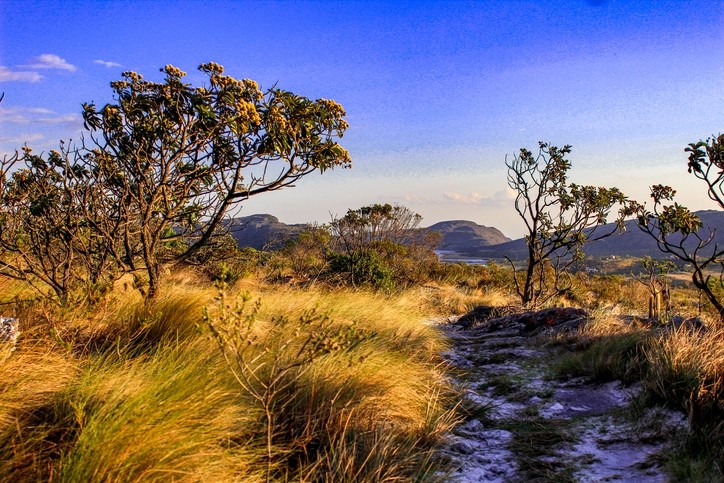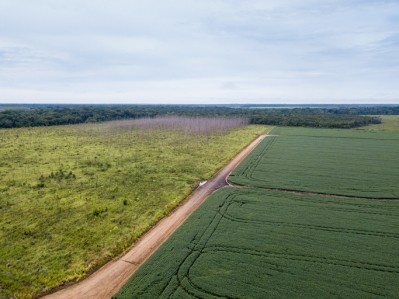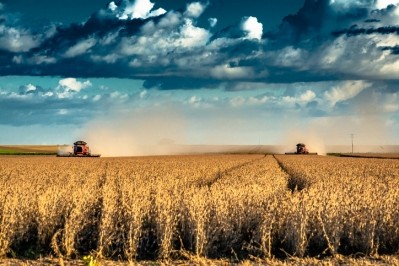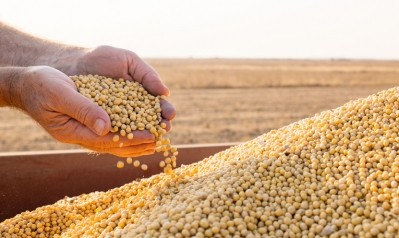Bunge: We are committed to using our position and scale to lead the industry's progress on deforestation

The company said the move will have benefits for the entire supply chain.
The Cerrado, writes the WWF, is one of the most threatened and over-exploited regions in Brazil, second only to the Atlantic Forests in vegetation loss and deforestation: “Unsustainable agricultural activities, particularly soy production and cattle ranching, as well as burning of vegetation for charcoal, continue to pose a major threat to the Cerrado's biodiversity. Despite its environmental importance, it is one of the least protected regions in Brazil."
Dubbed Bunge Sustainable Partnership, the multinational claims its new surveillance initiative will help partners implement supply chain verification systems, including satellite and farm-scale images. “Dealers can adopt independent imaging services or use Bunge's geospatial monitoring structure at no cost.”
The pilot program is being carried out in partnership with Agrícola Alvorada, and data from the properties the dealer buy soybeans from have already been included in Bunge's satellite monitoring cycle for this year.
The initiative is part of Bunge's global non-deforestation policy with a public and voluntary commitment to reaching deforestation-free value chains worldwide by 2025.
The trader said it already has 100% traceability to the farm for its direct purchases and, in the Brazilian Cerrado region alone, it outlined how it monitors more than 8,000 farms, reaching a total of 11.6 million hectares (28.6 million acres), accounting for 96% of the soybeans purchased directly in this region.
With the engagement of grain dealers through the Bunge Sustainable Partnership, the company expects to reach 100% of traceability and monitoring of its indirect purchases in the next four years. It currently traces and monitors approximately 30% of its indirect purchases.
Digging deeper
We ran a Q&A with Bunge on this new initiative:
FeedNavigator (FEN): What will Bunge be monitoring exactly through this program?
Bunge: Our Sustainable Partnership program is aimed at fully tracking and monitoring areas where Bunge purchases soybeans indirectly in regions subject to deforestation in the Cerrado.
FEN: Will penalties be applied by the company to indirect suppliers who don’t adhere to sound practice - in other words, what measures are in place for non-compliance?
Bunge: When monitoring identifies soybean planting in areas that have recently been deforested, the company engages with the farmer to reinforce our policy. If the farmer chooses not to engage, it is suspended from selling to Bunge. However, Bunge believes that permanent changes are only possible through collaborative, sector-focused activity and is committed to using our position and scale to lead the industry's advances in this direction. For this reason, more than helping to comply with Bunge's global non-deforestation policy, the Sustainable Partnership program is a way for us to share our best practices to monitor risk areas, working collaboratively to halt deforestation. Because the grain dealers are not exclusive partnerships with Bunge, the implementation of methodologies for traceability and monitoring of their suppliers (farmers) will benefit the entire chain, including other companies that, like Bunge, carry out indirect purchases in the region.
FEN: Isn’t this only about illegal deforestation but a huge challenge within the Cerrado is the fact that it is legal for a landowner to clear up to 80% of trees on their land? So regardless of monitoring, legal deforestation continues, under the local laws as they are set out. How can a trader help to address that?
Bunge: We are addressing market and customer expectations while also thinking about the other end of the chain, the farmer. Because of our scale, we don’t want to turn our backs on farmers who are working to adapt to market demand by increasing productivity without opening new land. Bunge is committed to using its position and scale to lead the industry's progress on deforestation. So, more than assisting in compliance with Bunge's Global Non-Deforestation Policy, the Sustainable Partnership Program is a way for the company to share the best practices it uses for monitoring risk areas, collaborating to halt deforestation – both legal and illegal – and helping to address regional challenges and opportunities due to enhanced traceability into 3rd party sourcing.
FEN: Can Bunge clarify its position on legal deforestation?
Bunge: We are committed to achieving deforestation-free value chains worldwide by 2025 – the most ambitious commitment in our industry. Our commitment extends to legal deforestation as well and we are working to reach this goal by 2025, through engagement with farmers and all players within our supply chains.
FEN: Farmers often tend to be focused on short-term economic profit, rather than long-term global good, which would incorporate the value of water systems, carbon sinks and wildlife habitats – what educational initiatives is Bunge running to encourage soy production on already degraded land in the Cerrado?
Bunge: We work hard to support sustainable production from rural producers by providing a series of incentive tools.
- One of them is a long-term credit line for Cerrado producers interested in expanding their production over areas that have already been opened. We also helped, with support and funding, a pilot group of producers to obtain RTRS (Round Table on Responsible Soy) certification, whose standards guarantee zero deforestation and zero conversion of native vegetation.
- Bunge is a partner of Agroideal.org – a free, online territorial intelligence system built in collaboration with The Nature Conservancy, other market participants, associations, financial institutions, NGOs, and private and public research agencies to allow users to integrate agronomic, environmental and other data to make better decisions about how to sustainably expand agriculture production.
- We recently launched Agroapp Bunge, a new direct communication channel to address issues related to sustainability and offer support to the producer. The cell phone application acts as a hub of information and tools to support sustainable production, in addition to offering producers easy access, to the data of the Rural Environmental Registry of their properties, which contributes to the environmental management of the property.
- Bunge is also a founder of the Soft Commodities Forum (SCF), a global platform for leading soft commodities companies, convened by the World Business Council for Sustainable Development (WBCSD) for the purpose of advancing collective action around common sustainability challenges.
FEN: And what factors are holding back soy production on those areas of already degraded land?
Bunge: Balancing sustainability and the protection of biodiversity with the ongoing global demand for agricultural commodities is among the most critical topics targeted by our company and our industry. We will continue to do our part and focus on collaborative projects to reinforce the urgent need to raise environmental responsibility standards across the value chain.
Farmers need to receive appropriate incentives from the value chain so the expansion over already open land turns into their best financial option. What is really important to emphasize, though, is that such expansion over already open and degraded land is today the main way of expanding soy in Brazil, for a majority of cases. We are addressing those cases of expansion based on legal rights on their owned pristine lands. That’s where the right incentives and recognition from the value chain for such environmental service needs to in place.
Facts about the Cerrado:
- Covering 2 million km2, or 21% of the country's territory, the Cerrado is the second largest vegetation type in Brazil after the Amazon.
- The area is equivalent to the size of England, France, Germany, Italy, and Spain combined.
- More than 1,600 species of mammals, birds and reptiles have been identified in the Cerrado.
- Some of South America's most important rivers - the Amazon, Paraná-Paraguai and São Francisco - begin here.
- Annual rainfall is around 800 to 1600mm per year.
- Only 20% of the Cerrado's original vegetation remains intact; less than 3% of the area is currently protected by law.
Source: WWF














